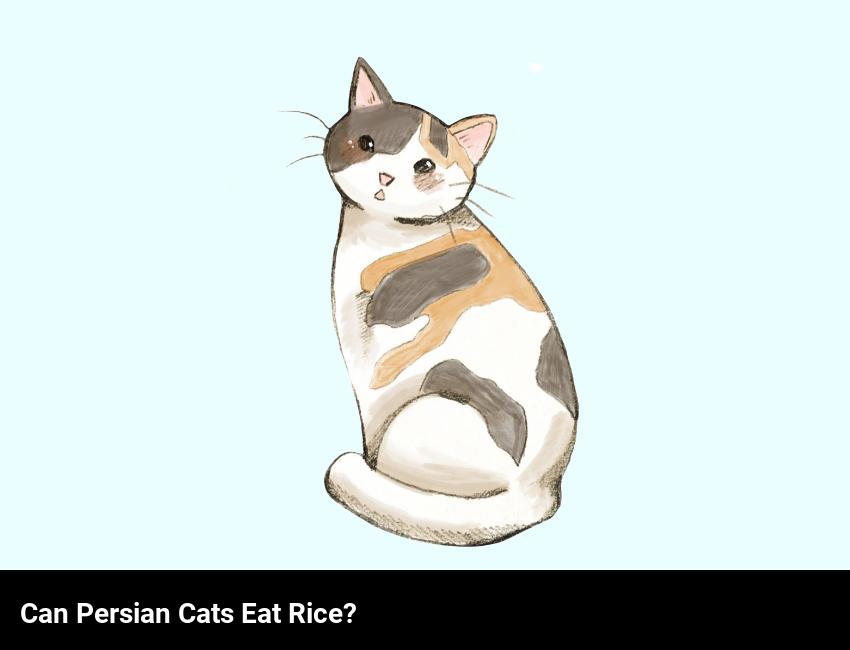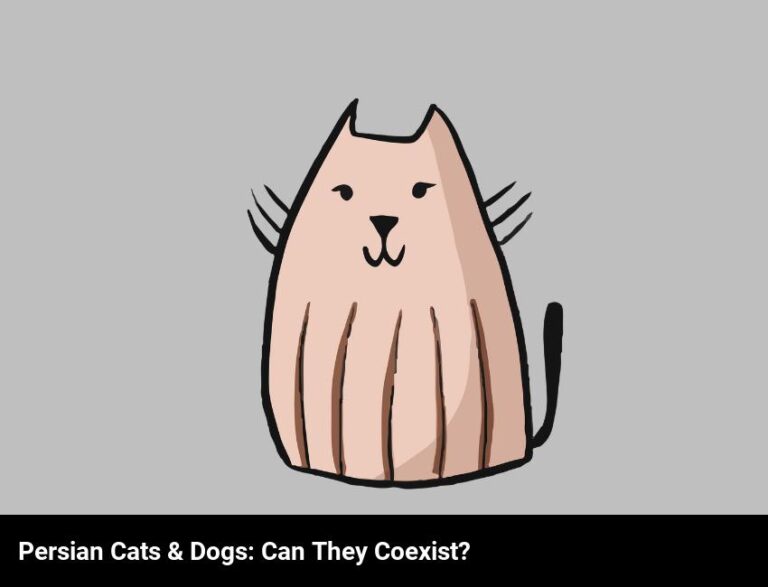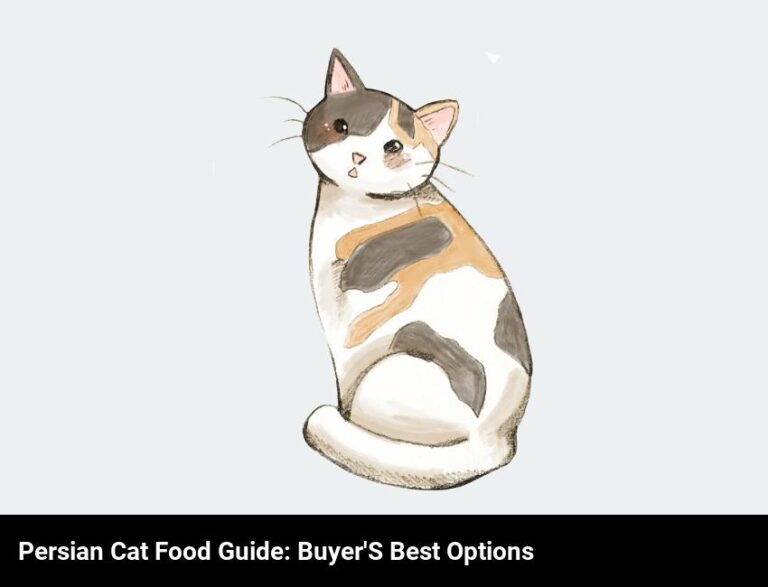Can Persian Cats Eat Rice?
Yes, Persian cats can eat rice. Rice is a healthy and nutritious option for cats and can be served as a treat or as part of a balanced diet.
As a long time lover of Persian cats, I have often wondered if feeding them rice is a good idea. After all, I have heard stories of cats eating rice, but I wasn’t sure if this was the right choice for my beloved pet. I was determined to find out if Persian cats can eat rice and if so, what are the benefits and potential risks?
To find out the answers to my questions, I did some research and talked to some experts. From what I learned, it turns out that feeding rice to a Persian cat can be beneficial in some ways, as long as it is done responsibly. Rice can provide the essential nutrients that a Persian cat needs and can be a great source of energy, but it’s important to know the ideal amount and the potential risks.
That’s why I decided to write this blog. In it, I’ll be discussing the benefits and potential risks of feeding a Persian cat rice, as well as other alternatives to rice. I’ll also be sharing some tips for introducing rice into a Persian cat’s diet, as well as the nutritional requirements of Persian cats and how to tell if your cat is getting enough nutrition from rice.
Is rice a healthy option for persian cats?
Yes, rice is a healthy option for Persian cats! Rice is a great source of protein and carbs, which are essential for cats. Rice also provides essential vitamins and minerals, such as vitamin B and zinc, which can help boost your Persian cat’s immune system. The high-quality carbohydrates found in rice can also help keep your cat’s digestive system healthy. Plus, it’s an affordable option that is easy to find.
Rice also has the added benefit of being low in fat and free from common allergens, making it a great choice for cats that have sensitive stomachs. Additionally, it is a good source of fiber, which can help keep your cat’s gastrointestinal tract healthy.
When feeding your Persian cat rice, make sure to use brown rice instead of white. Brown rice is more nutrient-dense than white rice and has a higher fiber content, which is beneficial for your cat’s health. Also be sure to provide plenty of fresh water to keep your cat hydrated.
Overall, rice is an excellent option for Persian cats, as long as it is served in moderation. Rice provides a range of health benefits while still being affordable and easy to find. Plus, it is low in fat and free from common allergens, making it an ideal choice for cats with sensitive stomachs.
What are some of the potential dangers of feeding rice to a persian cat?
Yes, Persian cats can eat rice, but there are some potential dangers that could arise from feeding this food to them. Firstly, rice doesn’t offer much in terms of nutritional value. It doesn’t provide the same amount of nutrients and vitamins that cats need in order to stay healthy, so it can be difficult to make sure that your Persian cat is getting all of the nutrients it needs.
Furthermore, rice can be difficult for cats to digest. It can cause digestive problems and even diarrhea, which can be dangerous if left untreated. Additionally, rice can expand in the stomach, so if your cat eats too much, it could lead to an uncomfortable and painful feeling of bloating.
Finally, rice can often contain pesticides, which can be hazardous to cats. If you’re going to feed your cat rice, make sure it’s organic and grown in a safe, healthy environment.
Overall, while Persian cats can eat rice, it’s important to be aware of the potential dangers that come with it. Make sure that you monitor your cat’s nutrition and digestion, and only feed them organic rice if you decide to include it in their diet.
What other alternatives are there to feeding rice to a persian cat?
Absolutely! Persian cats can eat more than just rice. In fact, variety is essential for a healthy and balanced diet. Feeding rice alone to a Persian cat could lead to dietary deficiencies, so it’s vital to provide a range of nutritious and delicious alternatives.
First, canned wet food is an excellent option. Look for brands specifically designed for cats, as they are packed full of essential nutrients and vitamins. Canned wet food also comes in a variety of different flavors, so your Persian cat will never get bored!
Dry food is another great choice. Again, look for brands designed specifically for cats and always check the ingredients list. You’ll want to ensure the food contains the necessary nutrients and vitamins, as well as being free of fillers and artificial preservatives.
Lastly, you can also consider adding fresh foods to your Persian cat’s diet. Small portions of lean meats, fish, and vegetables are all welcomed additions. Just remember to always cook the meat and fish first, as raw meat and fish can contain harmful bacteria.
So, as you can see, there are plenty of alternatives to feeding rice to your Persian cat. A varied and balanced diet is the key to keeping your cat healthy and happy.
What are the benefits of feeding rice to a persian cat?
Yes, you can feed your Persian cat rice! Rice is a great source of energy and can provide your feline friend with the essential vitamins and minerals they need. Here are some of the benefits of feeding your Persian cat rice:
- Rice is a great source of carbohydrates and fiber, which can help to keep your cat’s digestive system healthy.
- Rice is packed with important vitamins and minerals, like zinc, iron, magnesium, and B vitamins. All of these are essential for keeping your cat healthy.
- Rice is a low-calorie food, so it’s a great option for cats who need to watch their weight.
- Rice is a versatile food, so you can mix it with other foods or add some fish or meat to make it more interesting for your cat.
- Rice is easy to digest, so it can be a great option for cats with sensitive stomachs.
- Rice is a great source of energy, so it can help to keep your Persian cat active and alert.
What are some tips for introducing rice into a persian cat’s diet?
You’ve probably heard that cats are finicky eaters, and you may be wondering if Persian cats can eat rice. The answer is yes, you can incorporate rice into your Persian cat’s diet! Here are some tips for introducing rice into your Persian cat’s diet:
- Start slow: Don’t just add a large bowl of rice to your cat’s food. Start by introducing a teaspoon of cooked rice to their regular food. Keep adding more rice until it makes up about 25-30% of their daily feed.
- Variety is key: Serve your cat different types of rice, such as white, brown, or wild. This will keep them interested in their food and help them learn to enjoy new textures.
- Add some flavor: To make the rice more palatable for your cat, add some of their favorite flavors. This could be a bit of canned tuna or a teaspoon of chicken broth.
- Monitor their intake: As with any food, it’s important to keep an eye on how much your cat is eating. If they start to gain too much weight, reduce the amount of rice you give them.
By following these tips, you can easily introduce rice into your Persian cat’s diet.
What is the ideal amount of rice to feed a persian cat?
You may have heard that rice is safe and healthy for cats, including Persians. But when it comes to the ideal amount of rice to feed a Persian cat, there is no one-size-fits-all answer.
Generally speaking, a Persian cat needs about 1/4 to 1/2 cup of uncooked rice per day, depending on its size and activity level. But you’ll want to adjust this amount depending on your cat’s individual needs and preferences.
For example, if your Persian cat is particularly active, you may want to increase the amount of rice slightly. Conversely, if your cat is elderly or overweight, you may want to reduce the amount.
Also, if you’re feeding your Persian cat cooked rice, the amount should be less than if you were feeding it uncooked rice. Cooked rice expands when it’s cooked, so you don’t want to give too much of it to your cat.
Another thing to consider is the type of rice you’re feeding your Persian cat. Brown rice and wild rice are generally better choices than white rice. Brown rice is higher in fiber, which is important for your cat’s digestive health, while wild rice is higher in essential fatty acids.
Finally, if you’re unsure about how much rice to feed your Persian cat, talk to your veterinarian. They can give you personalized advice on how much and what type of rice is best for your cat.
In conclusion, there is no one-size-fits-all answer when it comes to how much rice you should feed a Persian cat. The ideal amount will depend on your cat’s individual needs and preferences. Talk to your veterinarian for personalized advice on how much and what type of rice is best for your cat.
What are the nutritional requirements of persian cats?
Yes! Persian cats have specific nutritional requirements that are important for their health. As with any cat, it’s important to make sure that your Persian cat gets the right balance of proteins, fats, carbohydrates, vitamins, minerals and water.
High-quality dry cat food is essential for a Persian cat’s diet, as it provides them with the vitamins, minerals and other nutrients they need. Protein sources, such as chicken, fish, turkey, and eggs, should make up the bulk of their diet. If you’re feeding your Persian cat wet food, make sure it is free of preservatives and fillers.
Some Persian cats have very sensitive stomachs and may also benefit from a diet of raw or home-cooked food. This type of diet should include lean, unprocessed meats, vegetables, and fruits.
Rice is not a complete food for cats, so it should not be the main focus of their diet. While a small amount of cooked white rice can be offered as an occasional treat, it should not be a regular part of their diet. Rice should also not be served raw.
In addition to a balanced diet, make sure your cat gets plenty of exercise and stimulation. Playing with a variety of toys, scratching posts and cat trees can help keep them active and mentally stimulated.
By following these guidelines and providing your Persian cat with the right balance of nutrients and exercise, you can help keep them healthy and happy.
How can you tell if your persian cat is getting enough nutrition from rice?
Yes, Persian cats can eat rice, but it’s important to make sure your cat is getting the right nutrition from it. Here are some tips to help you make sure your Persian cat is getting enough nutrition from rice:
- Check the ingredients. Look for rice that has been enriched with vitamins and minerals, as these can provide your cat with important nutrients.
- Consider adding other ingredients. You can mix in cooked or ground meat, or cooked vegetables like carrots, to make sure your cat is getting all the nutrients they need.
- Monitor your cat’s weight. Keep an eye on your cat’s weight to make sure they’re eating enough and getting the right amount of nutrients.
- Ask your vet. If you’re in doubt, your vet can provide advice on the best type of rice to give your Persian cat and make sure they’re getting enough nutrition.
By following these steps, you can make sure that your Persian cat is getting enough nutrition from rice.

Frequently Asked Questions
Is it safe to give your persian cat rice?
It depends. Rice can be a safe and healthy part of a balanced diet for cats, although it is not a complete source of nutrition. You should always consult with your veterinarian before introducing any new food into your Persian cat’s diet. Rice should be cooked and served in moderation.
Is there a recommended amount of rice for persian cats?
Yes, there is a recommended amount of rice that Persian cats should be eating. The amount should be no more than 10% of their daily calorie intake. This means that if your Persian cat consumes 200 calories a day, then no more than 20 calories should come from rice. Too much rice in their diet can lead to obesity and other health issues.
Can rice be used as an occasional treat for persian cats?
Yes, rice can be used as an occasional treat for Persian cats. Rice is a safe food for cats and can be mixed with other ingredients, such as cooked chicken, to add nutrition and flavor. However, rice should never be a major part of your Persian cat’s diet and should only be served in limited amounts as a special reward.







